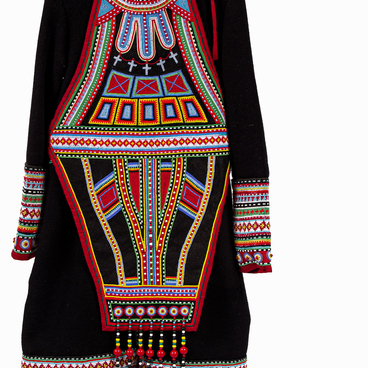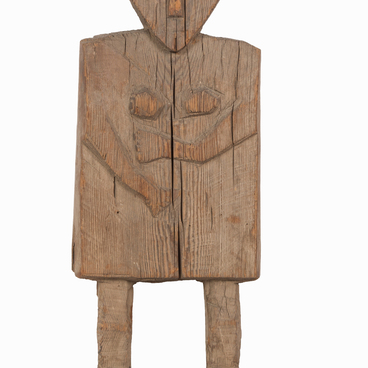The spear, an ancient weapon of hunters, which was made by local blacksmiths, played an important role in the hunting industry. It had the shape of a long oblong rhombus, with a sleeve for putting it on the shaft. The spear was usually kept in a wooden scabbard.
Such tools were used to kill bears in dens, and moose, deer, wild boars and roe deer, which they pursued through deep snow or ice. The Nanai used small spears, no longer than 15 centimeters, or javelins with shafts of 150–180 centimeters to kill reindeer on the water.
A small “handle”, a stop that prevented the spear from piercing the animal through, was tied to the shafts, which were 280–300 centimeters long, close to the sleeve. Some Nanai people had spears which served as an indicator of wealth and were not used for hunting. Wealthy and influential people would leave the house during weddings, grand wakes, and court proceedings holding a long, decorated spear in their hand.
A similar weapon was held by the bride during the rite of passage to the groom’s family. The girl was brought to her future husband’s house by her relatives, always her father and mother. The bride’s dowry was carried in the boat, and her bridesmaids also traveled with her, which is why, as a rule, a procession of several boats was assembled.
According to the old Nanai tradition, the maternal uncle gave the bride a decorated spear as a dowry. According to the custom, the groom always met the bride in his village. The bride was sitting in a boat with her bridesmaids at that time. Then she got out of the boat and walked to the house, holding the spear with the point upward. The bride was believed to ward off evil spirits in this way.
The length of the spear could reach 90 centimeters. The men who attended the wedding, the groom’s friends, fired guns into the air to ward off evil spirits. If the groom’s previous wife died, he had to perform a special ritual: put the barrel of the gun on the bride’s shoulder and shoot into the air. The bride entered her husband’s house accompanied by her mother and her husband’s relatives.
Ritual spears were made
by the most skillful blacksmiths. Most often, each head of the family had
skills to produce the simplest metal products. Not every camp had highly
skilled craftsmen.



